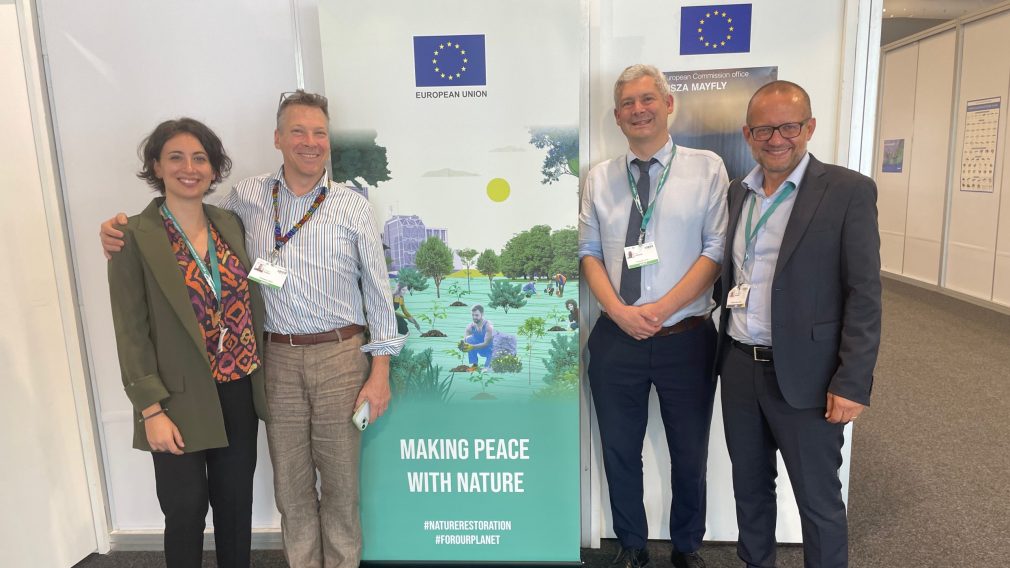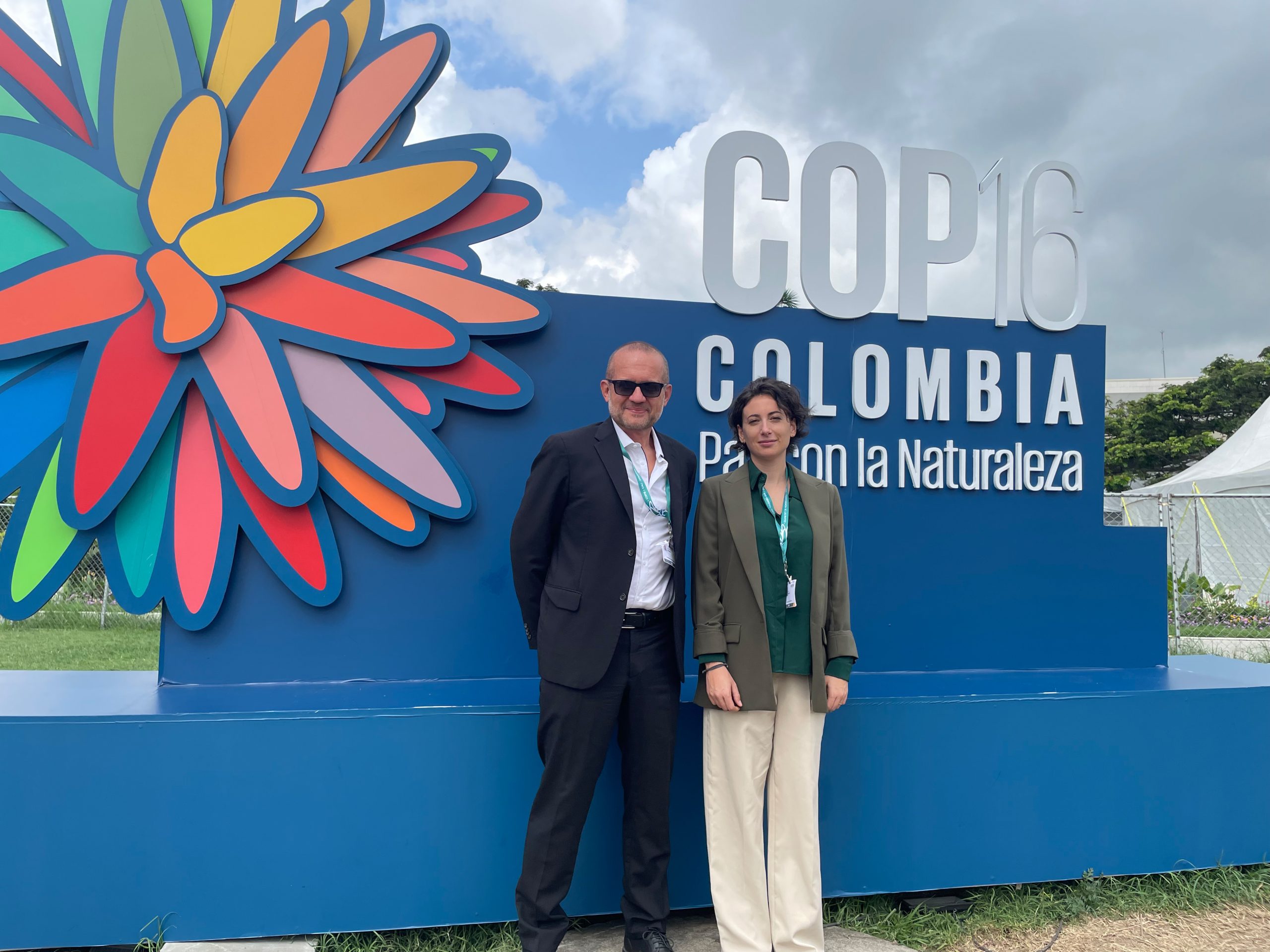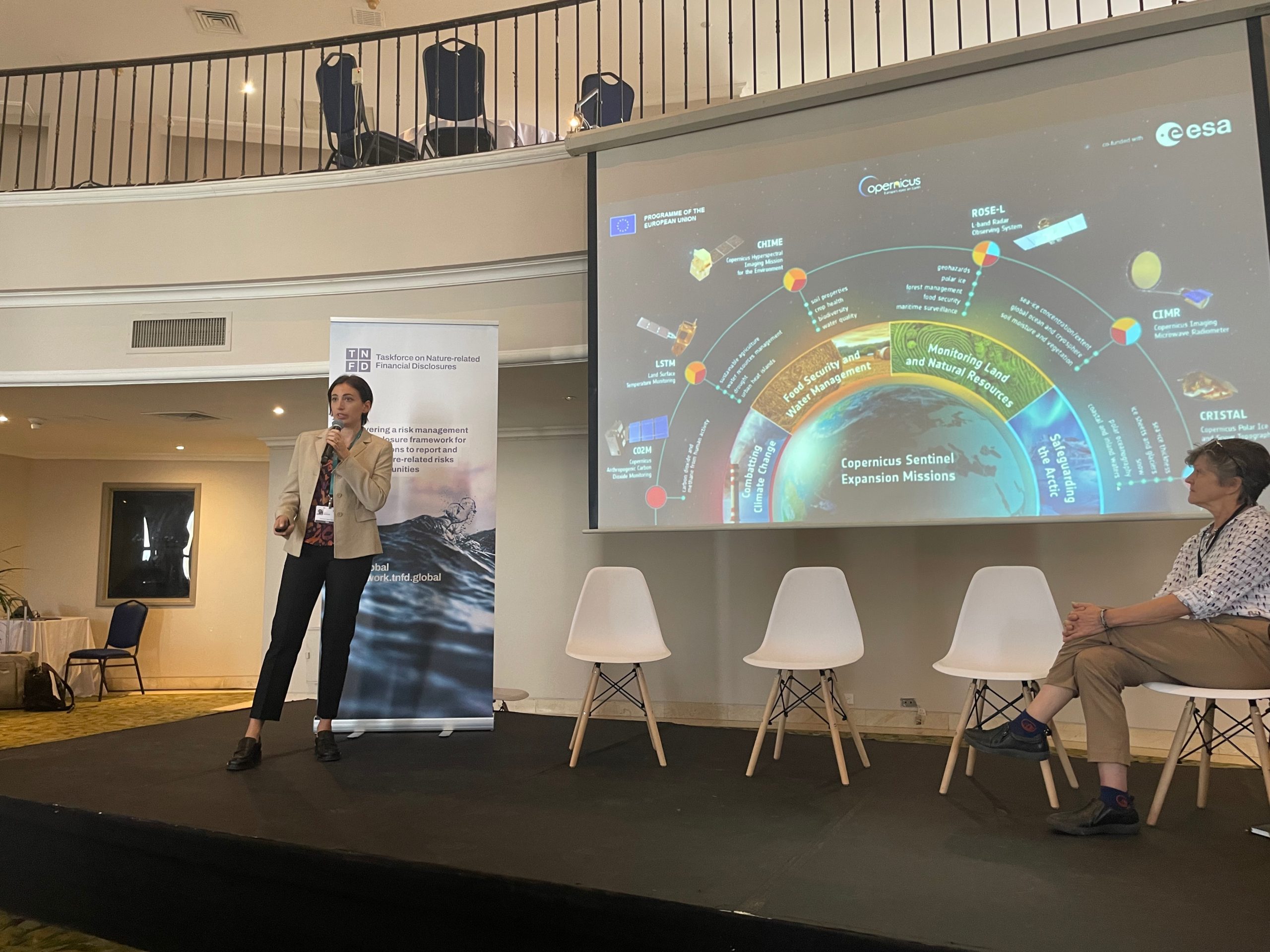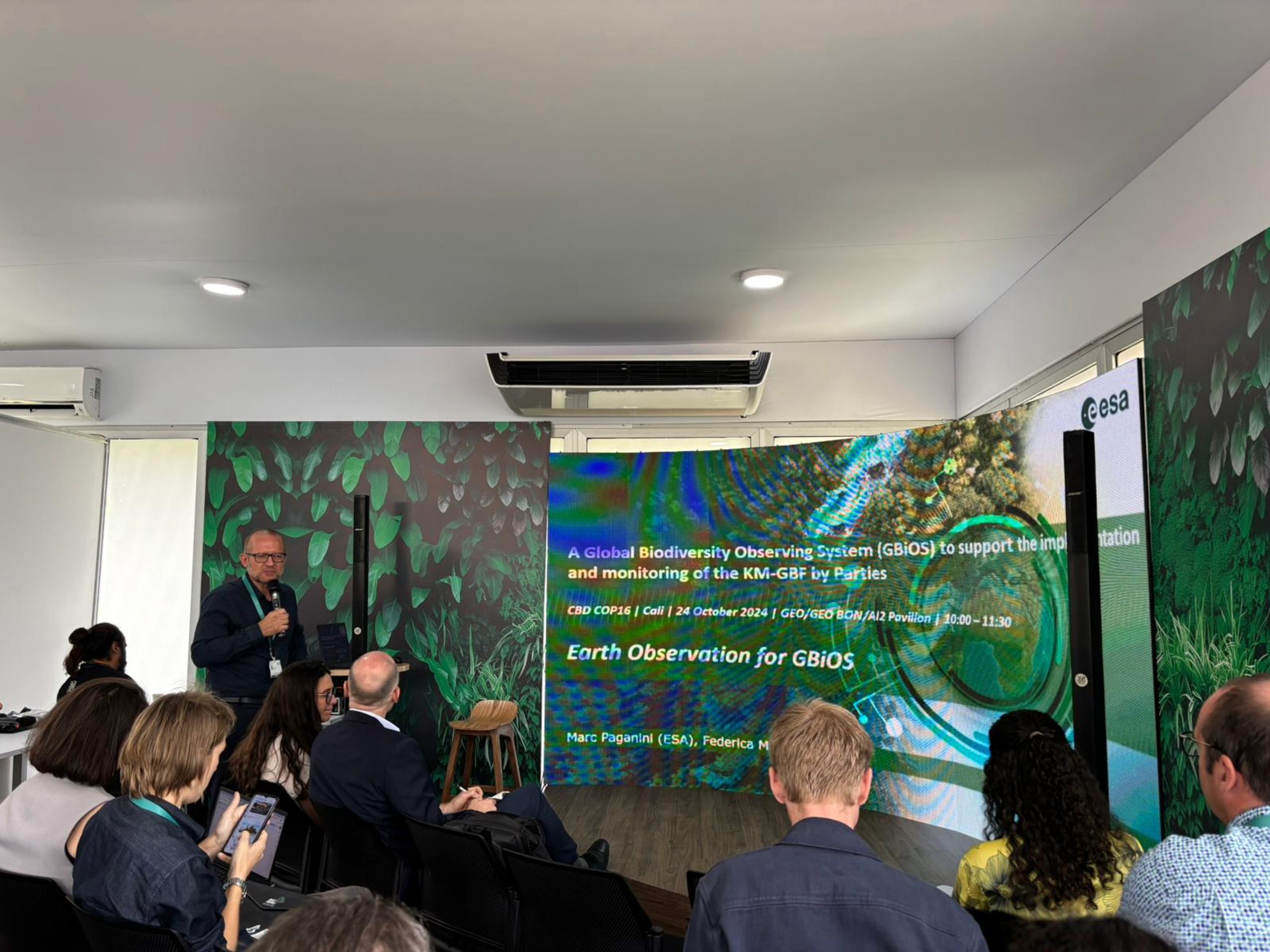Convened under the theme Peace with Nature, the 16th Conference of the Parties of the CBD (CBD COP16) held in Cali (Colombia) on 21 Oct – 1 Nov 2024, was the first COP since the adoption of the Kunming-Montreal Global Biodiversity Framework (KM-GBF) at COP15 in Montreal where delegates agreed on an ambitious pathway to reach the global vision of a world living in harmony with nature by 2050, with 4 overarching goals for 2050 and 23 targets for 2030.
ESA participation to COP 16 underscored the critical role of Earth Observation in biodiversity monitoring. ESA’s involvement reinforced its role as a key partner in biodiversity data and tools provision, capacity building, and policy support, working closely with international organisations like the European Commission, the United Nations Environment Programme (UNEP) and the Group on Earth Observations Biodiversity Observation Network (GEO-BON). These partnerships focus on using EO data to enable informed decision-making on the three main interlinked issues that humanity currently faces: climate change, pollution and biodiversity loss.
Key ESA contributions and collaborations conducted at CBD COP 16 included:
- Supporting GEO BON Global Biodiversity Observation System (GBiOS): GEO BON’s GBiOS initiative, designed to create a global biodiversity monitoring network, was a focal point at COP16. As countries implement National Biodiversity Strategies and Action Plans (NBSAPs), ESA’s EO data will be instrumental in GBiOS support to NBSAPs.
- Biodiversity Monitoring through open platforms integration: The integration of ESA’s openEO platform with GEO BON’s BON-in-a-Box toolkit will offer the biodiversity community a powerful resource for tracking biodiversity changes by enhancing access to Earth observation data and support countries in advancing on the GBF targets.
- Advancing biodiversity finance and natural capital accounting: As biodiversity finance took center stage at COP16, ESA’s upcoming project on nature finance was highlighted for supporting the Taskforce on Nature-related Financial Disclosures (TNFD). This initiative will improve the availability and quality of EO data for financial and corporate reporting.
- Global Knowledge Support Service for Biodiversity (GKSSB) and Technical and Scientific Cooperation (TSC) support centers: ESA reinforced its commitment to support the proposed GKSSB and the regional and sub-regional Technical and Scientific Cooperation (TSC) support centers, a network designed to enhance countries’ capacities for biodiversity management.
- World Ecosystem Extent Dynamics (WEED) project: Introduced at COP16, ESA’s WEED project uses AI and open-source tools to monitor ecosystem extent changes in line with the IUCN Global Ecosystem Typology and UN SEEA standards. The project supports the GEO Global Ecosystem Atlas, an online platform that consolidates global ecosystem maps, aiding GBF-aligned conservation efforts.
- BIOSPACE25 Conference: ESA promoted the upcoming BIOSPACE25 conference, the first international event dedicated to the role of satellite remote sensing in biodiversity management. Scheduled for February 2025, the conference has attracted a strong interest within the biodiversity community and is endorsed by CBD Executive Secretary Astrid Shomaker.
By enhancing the use of EO data and tools through partnerships, ESA is poised to play a pivotal role in monitoring biodiversity and ecosystems globally, advancing the Global Biodiversity Framework’s ambitious 2050 vision.
Featured image : ESA delegates at the CBD COP, Federica Marando (left) and Marc Paganini (right) with Grégoire Dubois (European Commission, DG Joint Research Centre, center left), and Gilles Doignon (European Commission, DG Research & Innovation, center right).




